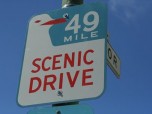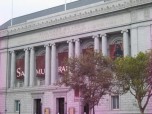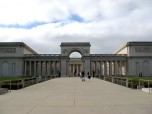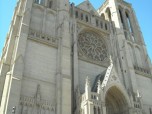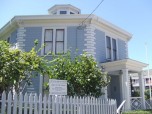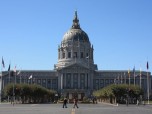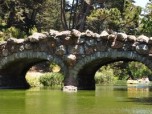Determining the tallest buildings in the world is not constant. Every few years a new one enters the list and replaces an old building. There is always some dispute on what should be counted as part of the building height. There are guidelines about what to consider to include in the height, and they are as follows: One, the height of a spire, a statue or any other architecturally integral element DOES count as a part of the building and therefore count as height. The additional height of antennae, flag poles or any other structure that is not classified as an architecturally integral element, DOES NOT count as a part of the height of a building. Also, the rook height is only relevant if there is not another type of architecturally-integral element above it. So, what is the tallest building in the world? Here are the ten tallest buildings in the world based on these guidelines.
 Burj Dubai is currently the tallest man-made building in the world, though it is not yet completely finished. It is scheduled for completion in September of 2009, but when last measured for height in January of 2009, it was about 2,684 feet (818 meters) tall and it became the tallest building in the world. It has at the moment 162 floors. This amazing piece of architecture is currently under construction in the Burj Dubai District of Dubai, United Arab Emirates.
Burj Dubai is currently the tallest man-made building in the world, though it is not yet completely finished. It is scheduled for completion in September of 2009, but when last measured for height in January of 2009, it was about 2,684 feet (818 meters) tall and it became the tallest building in the world. It has at the moment 162 floors. This amazing piece of architecture is currently under construction in the Burj Dubai District of Dubai, United Arab Emirates.
 Taipei 101 is the tallest completed building in the world and is located in Taiwan. It has been called one of the Seven New Wonders of the World (Newsweek) and one of the Seven Wonders of Engineering (Discovery Channel). This building stands at 1,670.60 feet (509.2 meters) tall and consists of 101 stories aboveground and five stories underground. The number 101 is significant for several reasons. It symbolizes high ideals by going one better than100, which is a traditionally perfect number. It also commemorates the renewal of time with the celebration of the century that started (100+1) when the building was made and every New Year that follows (1-01, meaning January first). The number also hints toward the binary numerical system used in digital technology. And finally it is a representation of where the building stands as 101 is the postal code of Taipei’s international business district.
Taipei 101 is the tallest completed building in the world and is located in Taiwan. It has been called one of the Seven New Wonders of the World (Newsweek) and one of the Seven Wonders of Engineering (Discovery Channel). This building stands at 1,670.60 feet (509.2 meters) tall and consists of 101 stories aboveground and five stories underground. The number 101 is significant for several reasons. It symbolizes high ideals by going one better than100, which is a traditionally perfect number. It also commemorates the renewal of time with the celebration of the century that started (100+1) when the building was made and every New Year that follows (1-01, meaning January first). The number also hints toward the binary numerical system used in digital technology. And finally it is a representation of where the building stands as 101 is the postal code of Taipei’s international business district.
 The Shanghai World Financial Center (SWFC) stands at about 1,614 feet (492 meters) in height and is located in the People’s Republic of China. This skyscraper is the second tallest completed building and the tallest competed building by roof measurement. It serves several functions; it consists of shopping malls, hotels, office buildings, observation decks, and conference rooms. The hotel area of the building will be the highest in world when it opens and is called Park Hyatt Shanghai. It also includes three amazing view points from their observation decks, the highest of which is 1,555 feet above the ground.
The Shanghai World Financial Center (SWFC) stands at about 1,614 feet (492 meters) in height and is located in the People’s Republic of China. This skyscraper is the second tallest completed building and the tallest competed building by roof measurement. It serves several functions; it consists of shopping malls, hotels, office buildings, observation decks, and conference rooms. The hotel area of the building will be the highest in world when it opens and is called Park Hyatt Shanghai. It also includes three amazing view points from their observation decks, the highest of which is 1,555 feet above the ground.
 The Petronas Twin Towers are tied for the spot of fourth tallest building in the World. These towers, located in Kuala Lumpur, Malaysia, are about 1,483 feet (452 meters) in height an each have 88 floors. These Twin Towers are connected by a sky-bridge between the 41st and 42nd floors. This bridge is the highest two story bridge in the world and is about 170 meters above the ground and weighs about 750 tons. This bridge is open to all visitors who use the lower level for travel and view, while the people in the apartments use the upper portion of the bridge. It should be noted that free passes that allow visitors up, though are limited and are given out on a first come, first serve basis.
The Petronas Twin Towers are tied for the spot of fourth tallest building in the World. These towers, located in Kuala Lumpur, Malaysia, are about 1,483 feet (452 meters) in height an each have 88 floors. These Twin Towers are connected by a sky-bridge between the 41st and 42nd floors. This bridge is the highest two story bridge in the world and is about 170 meters above the ground and weighs about 750 tons. This bridge is open to all visitors who use the lower level for travel and view, while the people in the apartments use the upper portion of the bridge. It should be noted that free passes that allow visitors up, though are limited and are given out on a first come, first serve basis.
 Nanjing Greenland Financial Center (also called the Greenland Square Zifeng Tower) is the fifth largest building in the world. It is still under construction but when last checked for height, it was about 1,476 feet (450 meters) tall. It is a mixed-function building meaning that it is used for different things. It includes office and retail space in the lower section it will include restaurants and a public observatory. The observation deck on the 72nd floor provides an unobstructed, panoramic view of Nanjing and the nearby Yangtze River, two lakes and the Ningzheng Ridge Mountains.
Nanjing Greenland Financial Center (also called the Greenland Square Zifeng Tower) is the fifth largest building in the world. It is still under construction but when last checked for height, it was about 1,476 feet (450 meters) tall. It is a mixed-function building meaning that it is used for different things. It includes office and retail space in the lower section it will include restaurants and a public observatory. The observation deck on the 72nd floor provides an unobstructed, panoramic view of Nanjing and the nearby Yangtze River, two lakes and the Ningzheng Ridge Mountains.
 The Sears’ Tower, located in Chicago, Illinois, is the sixth tallest free-standing building in the world. It was, at the time of its completion I 1873, the tallest building in the world, when it beat the World Trade Center for the title. It stands at about 1,451 feet (442 meters) in height and is the tallest building currently in the United States. In 2003, the Sears naming rights expired on the building, but it is still generally called that. However, a London-based insurance broker, the Willis Group, bought the naming rights in March of 2009 and in June of that same year it will be referred to by the name of he firm.
The Sears’ Tower, located in Chicago, Illinois, is the sixth tallest free-standing building in the world. It was, at the time of its completion I 1873, the tallest building in the world, when it beat the World Trade Center for the title. It stands at about 1,451 feet (442 meters) in height and is the tallest building currently in the United States. In 2003, the Sears naming rights expired on the building, but it is still generally called that. However, a London-based insurance broker, the Willis Group, bought the naming rights in March of 2009 and in June of that same year it will be referred to by the name of he firm.
 Guangzhou International Finance Center is a 1,435 feet (437.5 meter) super-tall sky-scraper to be completed in 2009 in Guangzhou (Shanghai), People’s Republic of China. This building and its twin are some of the highest high-rise buildings in China. They are to be used as an office space, conference center and hotel. The ground floor through the 69th floor will be used as offices, the 7th through 98th floors will be the hotel and on the 99th and 100th floors will be observation decks.
Guangzhou International Finance Center is a 1,435 feet (437.5 meter) super-tall sky-scraper to be completed in 2009 in Guangzhou (Shanghai), People’s Republic of China. This building and its twin are some of the highest high-rise buildings in China. They are to be used as an office space, conference center and hotel. The ground floor through the 69th floor will be used as offices, the 7th through 98th floors will be the hotel and on the 99th and 100th floors will be observation decks.
 Jin Mao Tower is an 88 story, 1,380 ft (421 meter) skyscraper that contains office spaces and the Shanghai Grand Hyatt Hotel that is located in Shanghai, People’s Republic of China. Along with the Orient Pearl Tower, it is the main focus of the skyline in Pudong. This building is the eighth tallest building in the world and was surpassed for the seventh tallest in 2007 by The Guangzhou International Finance Center. The building’s anchor tenant is the five-star, 555-room Shanghai Grand Hyatt hotel which occupies floors 53 to 87. It is the highest hotel in the world in terms of distance from the ground.
Jin Mao Tower is an 88 story, 1,380 ft (421 meter) skyscraper that contains office spaces and the Shanghai Grand Hyatt Hotel that is located in Shanghai, People’s Republic of China. Along with the Orient Pearl Tower, it is the main focus of the skyline in Pudong. This building is the eighth tallest building in the world and was surpassed for the seventh tallest in 2007 by The Guangzhou International Finance Center. The building’s anchor tenant is the five-star, 555-room Shanghai Grand Hyatt hotel which occupies floors 53 to 87. It is the highest hotel in the world in terms of distance from the ground.
 The Trump International Hotel and Tower and the International Finance Center are tied for the ninth tallest building in the world at about 1,362 feet (415 meters) tall. The former is located in Chicago, and was at first going to try for the tallest building the world, but after the September 11th attacks, there were many modifications made to the plans and it is not going to try for the record. The International Finance Center is located in Hong Kong, and consists of two buildings. These buildings are the IFC Mall and the 55 story Four Seasons Hotel. Bothe Trump’s Tower and the IFC are the exact height of the former World Trade Center, and will probably not be on the Top Ten list for many years to come due to the new buildings being constructed like Freedom Towers.
The Trump International Hotel and Tower and the International Finance Center are tied for the ninth tallest building in the world at about 1,362 feet (415 meters) tall. The former is located in Chicago, and was at first going to try for the tallest building the world, but after the September 11th attacks, there were many modifications made to the plans and it is not going to try for the record. The International Finance Center is located in Hong Kong, and consists of two buildings. These buildings are the IFC Mall and the 55 story Four Seasons Hotel. Bothe Trump’s Tower and the IFC are the exact height of the former World Trade Center, and will probably not be on the Top Ten list for many years to come due to the new buildings being constructed like Freedom Towers.
 CITIC Plaza is the world’s tallest concrete building. It is also the final addition to our list of the top ten tallest buildings in the world. It stands at about 1,283 feet (391 meters) tall and is located in the Republic of China. This and the other tall buildings that are taking over in Guangzhou, is a sign of the cities increasing wealth and ever-rising importance.
CITIC Plaza is the world’s tallest concrete building. It is also the final addition to our list of the top ten tallest buildings in the world. It stands at about 1,283 feet (391 meters) tall and is located in the Republic of China. This and the other tall buildings that are taking over in Guangzhou, is a sign of the cities increasing wealth and ever-rising importance.











